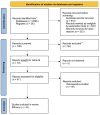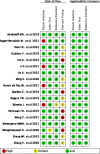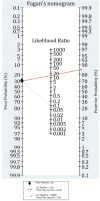The efficacy of artificial intelligence in diabetic retinopathy screening: a systematic review and meta-analysis
- PMID: 40264218
- PMCID: PMC12012971
- DOI: 10.1186/s40942-025-00670-9
The efficacy of artificial intelligence in diabetic retinopathy screening: a systematic review and meta-analysis
Abstract
Background: To evaluate the efficacy of artificial intelligence (AI) in screening for diabetic retinopathy (DR) using fundus images and optical coherence tomography (OCT) in comparison to traditional screening methods.
Methods: This systematic review was registered with PROSPERO (ID: CRD42024560750). Systematic searches were conducted in PubMed Medline, Cochrane Central, ScienceDirect, and Web of Science using keywords such as "diabetic retinopathy," "screening," and "artificial intelligence." Only studies published in English from 2019 to July 22, 2024, were considered. We also manually reviewed the reference lists of relevant reviews. Two independent reviewers assessed the risk of bias using the QUADAS-2 tool, resolving disagreements through discussion with the principal investigator. Meta-analysis was performed using MetaDiSc software (version 1.4). To calculate combined sensitivity, specificity, summary receiver operating characteristic (SROC) plots, forest plots, and subgroup analyses were performed according to clinician type (ophthalmologists vs. retina specialists) and imaging modality (fundus images vs. fundus images + OCT).
Results: 18 studies were included. Meta-analysis showed that AI systems demonstrated superior diagnostic performance compared to doctors, with the pooled sensitivity, specificity, diagnostic odds ratio, and Cochrane Q index of the AI being 0.877, 0.906, 0.94, and 153.79 accordingly. The Fagan nomogram analysis further confirmed the strong diagnostic value of AI. Subgroup analyses revealed that factors like imaging modality, and doctor expertise can influence diagnostic performance.
Conclusion: AI systems have demonstrated strong diagnostic performance in detecting diabetic retinopathy, with sensitivity and specificity comparable to or exceeding traditional clinicians.
Keywords: Artificial intelligence; Diabetic retinopathy; Screening.
© 2025. The Author(s).
Conflict of interest statement
Declarations. Competing interests: The authors declare no competing interests.
Figures








References
-
- Teo ZL, Tham Y-C, Yu M, Chee ML, Rim TH, Cheung N, et al. Global prevalence of diabetic retinopathy and projection of burden through 2045. Ophthalmology. 2021;128(11):1580–91. 10.1016/j.ophtha.2021.04.027. - PubMed
-
- Tufail A, Rudisill C, Egan C, Kapetanakis VV, Salas-Vega S, Owen CG, et al. Automated diabetic retinopathy image assessment software. Ophthalmology. 2017;124(3):343–51. 10.1016/j.ophtha.2016.11.014. - PubMed
LinkOut - more resources
Full Text Sources

